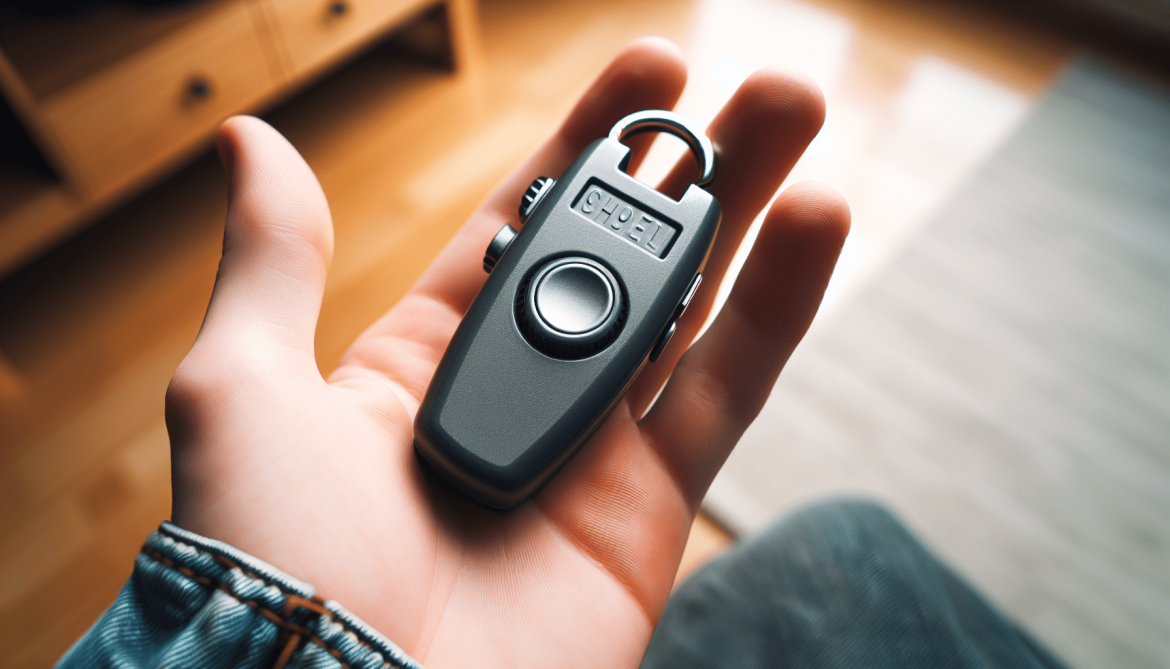Are you a busy pet owner struggling to find the time to train your furry companion? Look no further! This article provides a solution for all the overwhelmed dog owners out there – DIY dog training. Designed specifically for those with a busy schedule, this approach allows you to take control of your pet's training in a convenient and effective way. Say goodbye to the stress of finding a dog trainer and embrace the rewarding journey of training your pup yourself.
Training Basics
Understanding dog behavior
Understanding your dog's behavior is crucial when it comes to training. Dogs have their own unique communication methods, and recognizing their body language, vocalizations, and facial expressions can help you understand their needs and emotions. By studying canine behavior, you will gain insights into how dogs learn and how to effectively communicate with your furry friend.
Setting goals for training
Before diving into training, it's important to set clear and achievable goals. Determine what behaviors or commands you want your dog to learn and establish a timeline for achieving these goals. Having specific objectives will help you stay focused and motivated throughout the training process.
Creating a training plan
A well-structured training plan is essential for success. Break down your goals into smaller, manageable steps and create a timeline for each. Decide on the training techniques and reward system you will use and determine how often and for how long you will conduct training sessions. A training plan will provide you with a roadmap to follow and ensure consistency in your training efforts.
Positive Reinforcement Techniques
Using treats and rewards
Positive reinforcement is a highly effective training technique that involves rewarding your dog for desired behaviors using treats, praise, or other rewards. When your dog exhibits the desired behavior, immediately reinforce it with a reward. Treats can be a powerful motivator, so choose ones that your dog finds enticing. Remember to gradually decrease the frequency of treats as your dog becomes more proficient in the behavior.
Clicker training
Clicker training is a popular positive reinforcement technique that involves using a handheld clicker to mark desirable behaviors. The clicker serves as a signal to let your dog know that they have done something right and will be rewarded. By associating the sound of the clicker with positive experiences, your dog will quickly learn to repeat the behaviors that elicit the click.
Praise and affection
Alongside treats and clicker training, praise and affection play a vital role in reinforcing good behavior. Verbal praise, such as saying "Good boy!" in an enthusiastic tone, paired with physical affection like petting or gentle stroking, can make your dog feel loved and appreciated. Dogs thrive on positive attention, so be generous with your praise and affection when they exhibit desired behaviors.

This image is property of images.pexels.com.
Training Commands
Teaching basic commands (sit, stay, come)
Teaching your dog basic commands is fundamental to their training. Start by teaching simple commands like "sit," "stay," and "come." Use positive reinforcement techniques and consistency to reinforce these commands. Break each command down into small steps, and gradually increase the difficulty level as your dog becomes proficient. Remember to be patient and understanding with your furry companion as they learn these new commands.
Building on advanced commands (heel, leave it)
Once your dog has mastered the basic commands, you can move on to more advanced ones. Commands like "heel" and "leave it" require enhanced focus and control from your dog. Use positive reinforcement and clear communication to teach these commands. As with the basic commands, break them down into smaller steps and gradually increase the difficulty level. Advanced commands will not only enhance your dog's obedience but also provide mental stimulation.
Training for specific needs (housebreaking, leash walking)
In addition to basic and advanced commands, specific training may be required for certain needs, such as housebreaking or leash walking. Housebreaking involves teaching your dog proper bathroom etiquette, while leash walking ensures they walk calmly and without pulling on the leash. These specialized training needs require consistency, patience, and positive reinforcement. Seek guidance from resources or professionals if you encounter challenges during these training processes.
Training Tools and Equipment
Choosing the right collar or harness
Selecting the right collar or harness for your dog is essential for both their safety and training. Collars should be comfortable and properly fitted, choosing options like flat collars, martingale collars, or head halters based on your dog's size and temperament. Harnesses are an excellent alternative, especially for dogs prone to pulling. Choose a harness that distributes the pressure evenly and doesn't restrict your dog's movement.
Using leash and clicker
Leashes and clickers are indispensable tools for effective training. Leashes provide control and allow you to guide your dog during walks or training sessions. Consider using a standard leash or a retractable one depending on your needs and your dog's behavior. Clickers, as mentioned earlier, help mark desired behaviors and provide clear communication between you and your dog. Familiarize yourself with using a clicker and practice timing the clicks accurately.
Interactive toys and puzzles for mental stimulation
Incorporating interactive toys and puzzles into your dog's training regimen can provide mental stimulation while fostering a deep bond between you and your pet. Toys that dispense treats when manipulated correctly can motivate your dog to learn problem-solving skills. Interactive puzzles challenge their cognitive abilities and help keep their minds active. These tools are particularly useful for keeping your dog engaged and mentally stimulated, especially during indoor training sessions.

This image is property of images.pexels.com.
Scheduling and Consistency
Finding time for training sessions
As a busy pet owner, finding time for training sessions may seem challenging, but it's crucial for successful training. Allocate specific time slots each day for training sessions, keeping them consistent and predictable. Short, frequent sessions are often more effective than infrequent, lengthy ones. Consider incorporating training into your morning or evening routine, ensuring that you and your dog are both fresh and focused.
Creating a consistent routine
Consistency is key when it comes to dog training. Dogs thrive on routine, so establish a consistent daily routine that includes regular training sessions. Consistent cues and commands help your dog understand what is expected of them and promote faster learning. Your routine should include a balance of mental and physical stimulation, as well as rest and relaxation. Stick to your routine as much as possible to maintain structure and predictability for your dog.
Incorporating training into daily activities
Training doesn't have to be confined to formal sessions. You can incorporate training into your daily activities to reinforce good behaviors throughout the day. For example, ask your dog to sit before mealtimes or before going outside for a walk. This reinforces their obedience and helps them understand that certain behaviors result in positive outcomes. By incorporating training into your daily routine, you reinforce consistency and make learning a part of your dog's everyday life.
Addressing Common Behavior Problems
Dealing with barking
Excessive barking can be problematic, but it's a behavior that can be addressed through training. Identify the triggers that cause your dog to bark excessively and work on desensitizing them to those triggers. Redirect their attention and reward them for calm behavior. Consistency is key when tackling barking issues, so avoid inadvertently reinforcing the behavior by giving attention when your dog barks. Seek professional help if the barking persists or becomes uncontrollable.
Managing separation anxiety
Separation anxiety can be distressing for both dogs and owners. Gradual desensitization and counterconditioning can be effective in helping your dog cope with being alone. Start by leaving your dog alone for short periods, gradually extending the duration as they become more comfortable. Provide distractions like toys or treat-filled puzzles to keep them occupied in your absence. Seek guidance from a professional trainer or behaviorist if your dog's separation anxiety persists or worsens.
Coping with leash pulling
Leash pulling is a common issue that can make walks frustrating and unpleasant. Train your dog to walk politely on a leash using positive reinforcement techniques. Encourage them to walk beside you by rewarding them when they are walking without tension on the leash. Use techniques like stop-start or change in direction to redirect their focus and discourage pulling. Consistency and patience are key when addressing leash pulling, so remain calm and persistent in your training efforts.

This image is property of images.pexels.com.
Socialization and Obedience
Introducing your dog to new people and animals
Proper socialization is crucial for your dog's well-being and behavior. Gradually introduce your dog to new people and animals in a controlled and positive environment. Reward your dog for calm and friendly behavior, and closely supervise their interactions. Expose them to various environments, sounds, and situations to build their confidence. Socialization should be an ongoing process that continues throughout your dog's life to ensure they remain comfortable and well-adjusted in different situations.
Dog-friendly outings and social activities
Taking your dog on dog-friendly outings and engaging in social activities is an excellent way to reinforce their training and strengthen the bond between you. Explore local parks, beaches, or hiking trails where your dog can safely interact with other dogs and people. Consider joining dog sports or organized playgroups to provide extra opportunities for socialization and mental stimulation. These outings and activities provide a fun and enriching experience for both you and your dog.
Joining obedience classes or clubs
Obedience classes or joining dog training clubs is a great way to enhance your training efforts and learn from professionals. In a structured setting, you and your dog will receive guidance from experienced trainers. Obedience classes offer a supportive environment where you can connect with other dog owners and share experiences. The structured curriculum helps strengthen your dog's obedience skills and provides an avenue for addressing any specific training challenges you may face.
Troubleshooting and Seeking Professional Help
Identifying training challenges
Throughout the training process, you may encounter various challenges or setbacks. These could range from difficulty in teaching certain commands to addressing specific behavior problems. Identifying these challenges is crucial to finding effective solutions. Assess the situation objectively and determine what aspects of your training need adjustment or improvement. Sometimes, seeking professional guidance can be beneficial to overcome training challenges and ensure you and your dog are on the right track.
When to seek professional assistance
While many dog owners successfully train their dogs on their own, there may be instances where professional assistance is necessary. Seeking help from a qualified dog trainer or behaviorist is recommended if you encounter persistent behavior problems, aggression issues, or if you feel overwhelmed and unsure how to proceed. A professional can assess your dog's behavior and provide tailored guidance and solutions to address specific training needs.
Choosing a qualified dog trainer
When selecting a dog trainer, it's important to choose someone who is knowledgeable, experienced, and uses positive reinforcement methods. Look for trainers with certifications or memberships in professional organizations, as these demonstrate a commitment to ongoing learning and ethical training practices. Take the time to research trainers, read reviews, and ask for referrals from other dog owners. A good trainer will have a positive rapport with both dogs and owners and will work in partnership with you to achieve your training goals.
Maintaining Training Results
Continuing training beyond initial goals
Training should not stop once you have achieved your initial goals. Dogs, like humans, benefit from ongoing learning and mental stimulation. Continue to set new goals and teach your dog new commands or tricks to keep their mind sharp and engaged. Regular training sessions, even if they are shorter, will help reinforce previous training and prevent regression of learned behaviors. Building upon your initial training efforts will strengthen the bond between you and your pet and ensure their continued growth and development.
Reviewing commands and reinforcing behavior
Periodically reviewing commands and reinforcing learned behaviors is essential for maintaining training results. Set aside time to practice previously taught commands to ensure ongoing compliance. Gradually reduce the use of treats and rewards as your dog becomes more proficient, but continue to give praise and affection. Regular reinforcement helps solidify your dog's understanding of the commands and ensures they remain responsive to your cues.
Addressing setbacks and challenges
Setbacks and challenges are normal during dog training, and it's crucial to address them promptly and appropriately. Take a step back and assess the situation objectively. Identify any potential causes for the setback, such as changes or inconsistencies in your routine or environment. Adjust your training approach if necessary, and seek professional advice if you are unsure how to proceed. Remember to remain patient and persistent, as setbacks are opportunities for growth and further learning.
Enjoying the Training Process
Making training sessions fun for both dog and owner
Training sessions should be enjoyable experiences for both you and your dog. Incorporate play, treats, and positive energy into your training routine. Keep training sessions short and frequent to maintain your dog's interest and prevent boredom. Vary the training environment to keep your dog engaged and stimulated. By creating a positive and fun learning environment, you will foster a stronger bond with your pet and make training an activity that you both look forward to.
Celebrating milestones and achievements
Celebrate your dog's milestones and achievements throughout the training process. Whether it's mastering a new command, overcoming a behavior challenge, or simply displaying a calm and obedient demeanor, take the time to acknowledge and praise their progress. This positive reinforcement motivates both you and your dog to continue working towards new goals and strengthens the bond between you. Celebrate each small victory, and remember that training is a journey filled with accomplishments.
Building a stronger bond with your pet
Training provides an excellent opportunity to strengthen the bond between you and your pet. It fosters trust, communication, and mutual understanding, allowing you to build a deeper and more meaningful relationship. As you spend time together training, you will learn more about each other's strengths and limitations. The cooperative nature of training creates a bond of teamwork and reinforces the bond of unconditional love. Embrace the training process as a chance to grow closer to your furry companion and relish in the joy of training together.
In conclusion, DIY dog training for busy pet owners is indeed possible. By understanding your dog's behavior, setting clear goals, creating a training plan, and using positive reinforcement techniques, you can successfully train your dog. From teaching basic commands to addressing behavior problems, DIY training requires consistency, patience, and an understanding of your dog's individual needs. By utilizing the right tools and incorporating training into your daily routine, you can enjoy the training process, celebrate milestones, and build a stronger bond with your pet. So make the commitment to train your dog and embark on a rewarding journey of learning and companionship.


